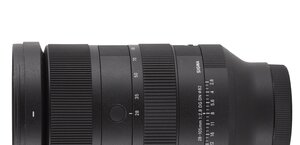Panasonic Lumix G 25 mm f/1.7 ASPH.
4. Image resolution
Let’s glance at the graph below and check how the tested lens compares in the centre of the frame and on its edge.

Please Support UsIf you enjoy our reviews and articles, and you want us to continue our work please, support our website by donating through PayPal. The funds are going to be used for paying our editorial team, renting servers, and equipping our testing studio; only that way we will be able to continue providing you interesting content for free. |
- - - - - - - - - - - - - - - - - - - - - - - - - - - - - - - - - - - - - - - - - - - - - - - -
When it comes to the frame centre you can observe results very similar to those of the Olympus 1.8/25 (and near the maximum relative aperture they are even a tad worse). Small wonder that, like in the case of the Olympus, we feel a bit disappointed. These are values noticeably lower than those of the system f/1.7 prime so the Panasonic G 42.5 mm f/1.7 ASPH. POWER O.I.S. Still in order to be fair you have to notice several other things. Firstly the Panasonic tested here is significantly cheaper than its brother with the longer focal length, mentioned by us above, and the Olympus with similar parameters. Secondly it would be difficult to call these values bad or even average; words like ‘solid’ or ‘very good’ come to my mind. After all the image is fully useful already from the maximum relative aperture and on stopping down the lens the MTFs are able to reach a level of 70 lpmm.
After consulting the edge of the frame your assessment might be even more positive. At the maximum relative aperture the image is already fully useful and the peak of the possibilities, reached by the lens from f/2.8 to f/8.0, looks nice indeed, better than in the case of the more expensive Olympus 1.8/25.
To sum up: for a very sensible sum of money Panasonic offers you a lens with good albeit not outstanding optics; what’s more important, it manages to avoid any image resolution flaws.
At the end of this chapter traditionally we present crops taken from photos of our resolution testing chart. They were saved as JPEG files along RAW files we used for the analysis above.
| Olympus E-PL1, JPEG, f/1.7 |
 |
| Olympus E-PL1, JPEG, f/5.6 |
 |






